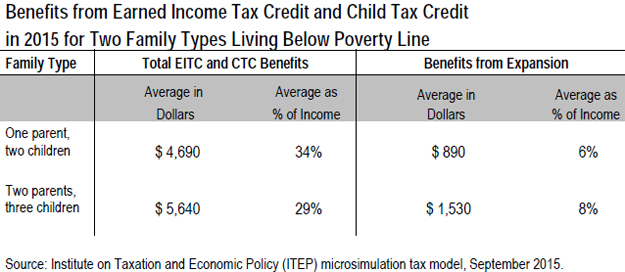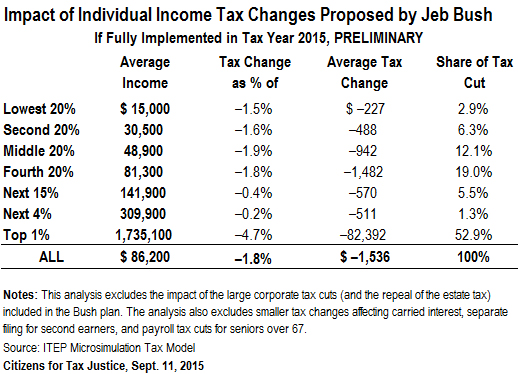Way back in 1902, when the Oregon legislature passed the first law allowing ballot initiatives, the measure was seen as a progressive reform that would put power back into the hands of the many, rather than the few. Today, 24 states allow ballot initiatives, where proposals that gain a certain number of signatures on a public petition can be put before the voters. But while the process was initially promoted to make government more democratic and responsive to the will of the people, today the ballot initiative is often used the tie the hands of lawmakers and thwart the prerogatives of future generations with onerous requirements. These ballot proposals can be anything but progressive, serving the economic interests of the wealthiest citizens and businesses rather than addressing the needs of citizens as a whole.
Supermajority requirements and tax and spending limits, two frequently proposed ballot measures, are not designed to promote the well-being of states. They do the exact opposite by making it nearly impossible for lawmakers to properly fund public investments that benefit a state and its people. Supermajority initiatives increase the threshold needed for tax legislation to pass. Tax and spending limits, like Colorado’s Taxpayer Bill of Rights (TABOR), couple state spending to arbitrary factors instead of allowing lawmakers to actually debate and decide what the state needs. These measures tie the hands of lawmakers by limiting their ability to govern and undercut democracy.
Two ballot measures, one currently before voters in Washington and the other still in the planning stage in North Carolina, highlight the danger of adopting anti- tax measures at the ballot box.
The Supermajority Requirement and Washington
A Washington ballot initiative masterminded by anti-tax activist Tim Eyman would essentially force lawmakers to add a supermajority requirement for tax legislation to the state constitution. If the initiative is approved by voters, lawmakers have the choice of voting to amend the constitution to adopt the requirement or losing over $1 billion in needed state revenue.
The Washington State Supreme Court ruled supermajority initiatives (led by Eyman) unconstitutional in 2010 and 2013, arguing that such a measure “unconstitutionally amends the constitution by imposing a two-thirds vote requirement for tax legislation. More importantly, the Supermajority Requirement substantially alters our system of government, thus enabling a tyranny of the minority.”
Mr. Eyman, undeterred, crafted his latest initiative with an eye toward getting around the court’s ruling. Since only lawmakers can approve an amendment to the constitution, the initiative (I-1366) is designed to force lawmakers to approve the amendment or otherwise lose more than $1.4 billion in revenue annually via an automatic one-cent decrease in the state sales tax. If voters approve this initiative in November, lawmakers’ ability to govern would be restricted either via the requirement or through a major revenue loss.
The result would be disastrous to state investments that help build a strong economy. Many vital public services could face cuts or be eliminated due to the revenue hole of $1.4 billion per year that would come as a result of a sales tax reduction. Those potentially lost revenues support public safety, schools and other investments that secure a strong economy and protect working families. In essence, this is a ‘lose-lose’ situation for lawmakers. They are either stuck with a damaging supermajority requirement or a massive loss in revenue.
Such restrictions can also force lawmakers to raise tuition and fees or utilize other devices to make up for lost revenue, placing an undue burden on everyone. Further, if lawmakers are looking to improve their tax structure (like adding a tax on capital gains to a tax code that currently does not tax personal income), they can forget about it. Any kind of real tax reform that might close wasteful loopholes for profitable corporations becomes nearly impossible with supermajority requirements.
Lastly, for anyone who believes our country has become too beholden to special interests, supermajority requirements worsen the situation. With a supermajority law in place, there are fewer legislators required to derail tax bills. Therefore, lobbyists and other special interests can essentially hold important legislation ‘hostage’.
The So-Called “Taxpayer Bill of Rights” and North Carolina
The North Carolina Senate approved a version of the “Taxpayer Bill of Rights” (TABOR) constitutional amendment for the ballot in November 2016 that would make things worse in the Tarheel State, where lawmakers have been on a spree of tax and spending cuts. The House has yet to give their stamp of approval, but there is still time for the House to discuss the measure and hopefully reject it over the coming months.
If approved by voters, the initiative would change the state constitution in three detrimental ways. First, spending on public services would be limited and a two-thirds majority vote would be required to raise additional revenue. Second, TABOR would cap the income tax at 5% (currently the flat rate is 5.75%), resulting in more than $2 billion less each year in funding for education and other priorities that benefit North Carolina. Finally, it would impose a limitation on the amount of revenue the state can collect and retain each year, requiring a deposit into the Rainy Day Fund but also a two-thirds vote to access that fund.
TABOR has some similarities to the supermajority requirement currently under consideration in Washington State, but its primary parallel is that it too limits lawmakers’ ability to adequately fund investments. The measure would be damaging to the quality of life for all North Carolinians.
A majority of families in the state rely heavily on the investments TABOR’s limits would undercut. Living proof of this struggle can be found in Colorado, where TABOR resulted in cuts to health care and education. It also allowed the economy, business environment, and overall quality of life to stagnate, if not worsen. That’s why Colorado voters ultimately decided to suspend the measure for five years, starting in 2005, in response to a sharp decline in public services.
Furthermore, the initiative’s revenue-limiting income tax cap would make it exceedingly difficult to create new economic growth. The decreased revenue would result in less investment in innovation, new industries, and building a strong workforce. Ensuring that a state’s tax structure is fair is also vital to a strong economy. The income tax is one of the best tools to ensure low-income people are protected from paying more in taxes than the wealthy. A cap on the income tax would only worsen the already upside-down North Carolina tax structure, as lawmakers will be forced to rely on other sources for revenue like regressive sales and property taxes.
Since TABOR limits the amount of revenue states can retain, it can fail to take unanticipated spending needs into consideration. The formula used to limit any unused revenue does not account for the growing costs of goods and services over time. TABOR would prevent the state from meeting the changing needs of its growing population while making it impossible to keep up with even basic growth in the costs of delivering public services. Requiring a two-thirds majority vote just to access the Rainy Day Fund in the event of an emergency could result in disaster.
Restrictive fiscal policies like North Carolina’s proposed TABOR initiative and Washington’s supermajority requirement do not help lawmakers govern, nor do they make governments more responsive to the will and needs of the people. Budgeting becomes nearly impossible when legislators are forced to comply with flawed limitations instead of serving the people in their states. What the people want becomes, in many ways, irrelevant and, ultimately, our democracy suffers. These supposedly progressive ballot initiatives are anything but.



 Most notably, the committee will consider bills making permanent the
Most notably, the committee will consider bills making permanent the 









 Presidential candidate Donald Trump
Presidential candidate Donald Trump